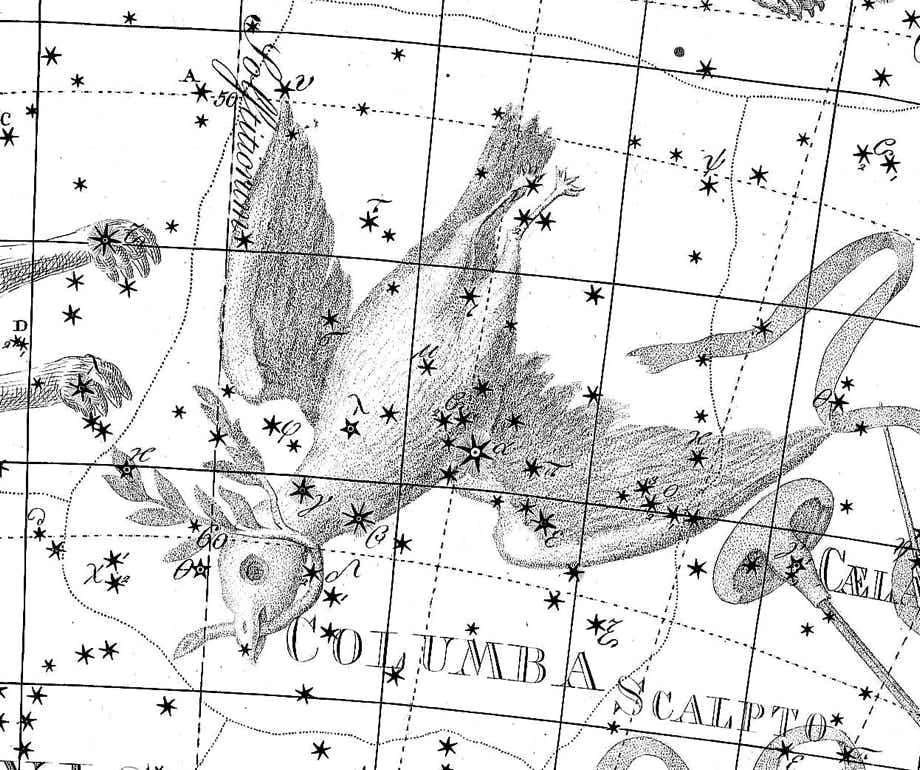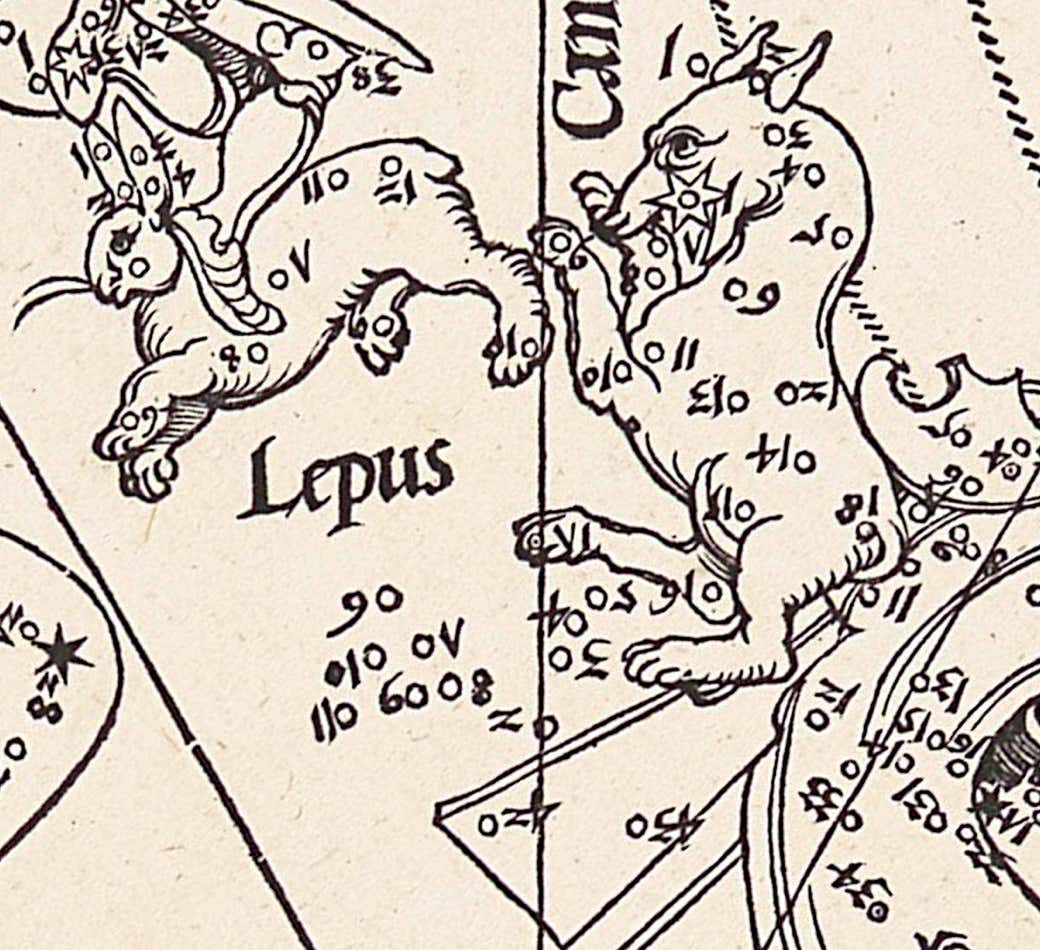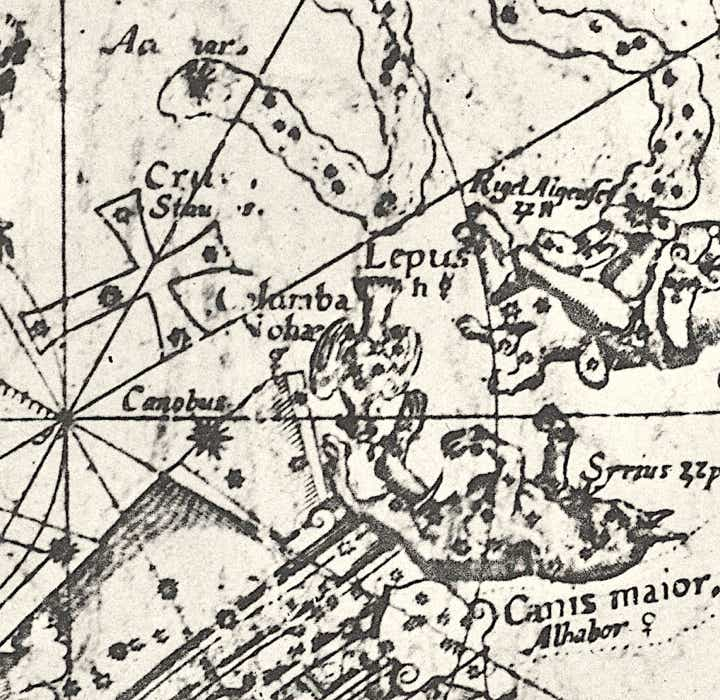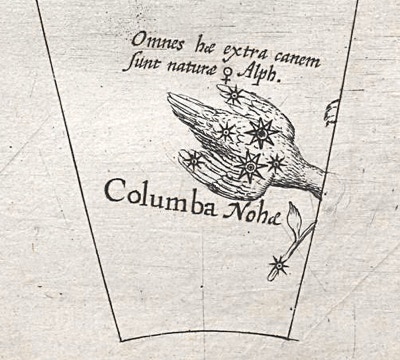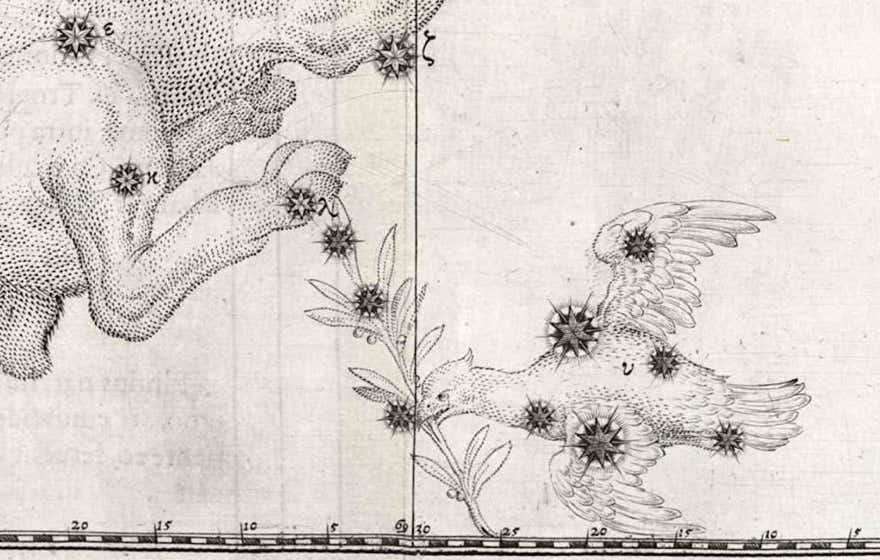
Genitive: Columbae
Abbreviation: Col
Size ranking: 54th
Origin: Petrus Plancius
A constellation formed in the late 16th century by the Dutch cartographer and astronomer Petrus Plancius, who took some stars that Ptolemy in his Almagest had catalogued as lying outside Canis Major. These unformed stars can be seen, for example, on the southern half of Albrecht Dürer’s star chart of 1515 as two little groups, one group of six to the south of Lepus, from which the dove was formed, and another group of four between the hind legs of Canis Major which Plancius visualized as an olive branch.
Columba was first shown as a separate constellation in 1592 on a celestial hemisphere that Plancius tucked into the margin of his first great terrestrial map, where it was named Columba Nohae. It appeared again more clearly on his celestial globe of 1598. The dove flies behind Argo Navis, the ship, and under the hind legs of Canis Major.
Columba is supposed to represent Noah’s dove, sent out from the Ark to find dry land, and which returned with an olive branch in its beak, a sign that the Flood was at last subsiding. To complete this Biblical tableau, Plancius even renamed Argo as Noah’s Ark on a globe of 1613. However, those familiar with the story of Argo might instead think of Columba as the dove sent by the Argonauts between the sliding doors of the Clashing Rocks to ensure their safe passage.
Columba with an olive branch in its beak as shown on Chart XVIII of the
Uranographia of Johann Bode (1801).
Johann Bayer included Columba on the chart of Canis Major in his Uranometria of 1603, but did not label its stars. The allocation of Greek letters to the stars of Columba was done by the French astronomer Nicolas Louis de Lacaille in his catalogue and planisphere of 1756.
The constellation’s brightest star, third-magnitude Alpha Columbae, is called Phact, from the Arabic word fākhitah meaning ‘ring dove’.
Chinese associations
In Chinese astronomy, three pairs of stars in Columba depicted three generations of a family. Alpha and Epsilon Columbae were Zhangren, an old farmer; Beta and either Lambda or Gamma were Zi, his son; while Kappa and Theta or Delta were Sun, his grandson. A star in the north of Columba, possibly Nu-2 or Mu, was Shi, droppings from the celestial toilet Ce in Lepus.
© Ian Ridpath. All rights reserved
Ptolemy listed 11 stars as lying outside Canis Major. The first of these stars lay above the head of the dog (at top of this illustration) and is now part of Monoceros. The other 10 were to the south of Lepus and Canis Major, as shown above on Albrecht Dürer’s northern celestial hemisphere chart of 1515. Dürer numbered these stars from 2 to 11, the order in which they were listed in the Almagest (the numbers are upside-down in this orientation). Petrus Plancius used these 10 ‘spare’ stars to form Columba in 1592. Star 6 is now part of Canis Major, where it is known as Lambda Canis Majoris and marks the end of the dog’s hind leg. Dürer’s chart showed the constellations in mirror image, as they would appear on a celestial globe. See also Ptolemy’s spare stars.
Columba, here named Columba Nohae, seen on Petrus Plancius’s world map of 1592. At left is a misplaced southern cross. Only one copy of this 1592 map is known, in the Colegio del Corpus Christi, Valencia.
Columba depicted on a gore from Plancius’s celestial globe of 1598. The Latin annotation ‘omnes hae extra canem’ explicitly notes that he took its stars from outside the greater dog, Canis Major, i.e. they were among Ptolemy’s so-called unformed stars. Canis Major itself, along with the head of the dove, lies on the adjoining gore, off picture to the right. (Nicolai Collection of the State Library of Württemberg, Stuttgart)


